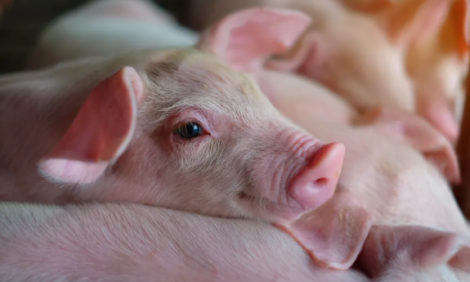



Lessons from the Danish Ban on Feed-Grade Antibiotics
By Dermot J. Hayes and Helen H. Jensen, Iowa State University - McDonald's Corporation recently adopted a policy that prohibits its direct suppliers from using medically important antibiotics as growth promotants in food animals after 2004. This article reviews recent experiences in Denmark in an attempt to understand the impact this decision will have for US hog production.Executive Summary
McDonald's Corporation, one of the largest buyers of meat in the U.S. fast-food industry, recently adopted a policy that prohibits its direct suppliers from using medically important antibiotics as growth promotants in food animals after 2004.
Although the implications of such a voluntary ban in the United States remain to be seen, recent experiences in Denmark provide some comparable evidence on the effects for hog production. An economic analysis, compiled from information gleaned from interviews with Danish veterinarians, farmers, economists, and industry analysts, estimates the economic costs of an antibiotics ban on pork producers in the United States.
Denmark first imposed a ban in pork production at the finishing stage, which was considered a
success, with producers encountering few additional costs. When the country further implemented a ban at the weaning stage, producers encountered severe health problems and incurred large costs. In addition, a complete ban actually increased the total antibiotics used, as Danish veterinarians were forced to prescribe additional therapeutic agents—and prescribed those used most often in human medicine.
The economic analysis of U.S. hog production indicates that a U.S. ban would increase costs by approximately $4.50 per animal in the first year. The total cost of a ban to the U.S. pork industry spread across a ten-year period could be in excess of $700 million.
Lessons from the Danish ban on feed-grade antibiotics
In June of 2003, McDonald’s Corporation announced that it would prohibit its direct
suppliers from using antibiotics that are important in human medicine as growth
promoters in food animals after 2004. The company also created a purchasing preference
for companies that work to minimize antibiotic use.
This announcement, coupled with recent Food and Drug Administration guidance on the same issue, will put pressure on the U.S. livestock industry to consider alternatives to feed-grade antibiotics. Denmark recently banned the use of feed-grade antibiotics in pork production and has been joined in this action by countries in the European Union. The ban was implemented first at the finishing stage and then at the weaning stage. Here, we describe Denmark’s experiences with the withdrawal of antibiotics from feed.
In summary, the Danes achieved a large reduction in antibiotic use, and producers encountered few costs when they banned at the finishing stage. However, when they imposed a ban at the weaning stage they encountered severe health problems and incurred large costs. Generally speaking, they achieved 80 percent of the benefits for 20 percent of the costs when they imposed a partial ban and encountered 20 percent of the benefits and 80 percent of the costs when they extended the ban.
The health consequences of the complete ban were so severe that veterinarians were forced to prescribe additional therapeutic antibiotics, which resulted in an increase in total antibiotic use. In addition, the antibiotics that the Danish veterinarians prescribed were those that are often used in human medicine, whereas the antibiotics that were banned are not. The country is now grappling with an increased resistance to these antibiotics in their population.
This is a classic example of how a policy prescription can have consequences that are exactly the opposite of those intended. Here, we describe the changes that were implemented in Denmark and the ways in which the Danish pork industry responded to these changes as we observed them in Denmark and through discussions with Danish veterinarians, farmers, economists, and industry analysts. We focus on the economic impact of the ban, as well as on the total antibiotic consumption, and use the evidence to consider the likely economic impacts of a similar ban for U.S. pork producers.
Further contents include:
- Background
- Antibiotic use
- Future Patterns of Antibiotic Use in Denmark
- Human Health Impacts and the Law of Unintended Consequences
- Cost impacts
- Economic effects
- References
Further Information
For more information on the "Danish Experience", read the following article:Successfully phasing out growth promoters
Also, browse through the numerous other articles on in-feed antibiotics in our
Feed and Nutrition Features Section
Source: Center for Agriculture and Rural Development - Iowa State University - June 2003








